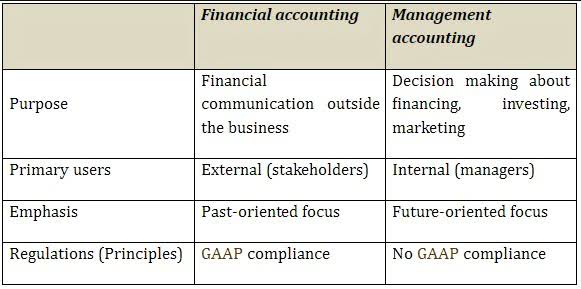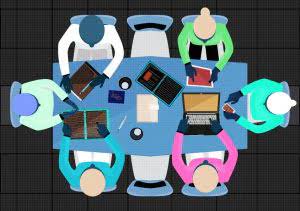
For example, if you need to move into a larger facility to produce additional goods, you would factor that expense in. Marginal cost is a production and economics calculation that tells you the cost of producing additional items. You must know several production variables, such as fixed costs and variable costs in order to find it. The main idea in Marginal Costing involves grasping the way costs fluctuate with different production levels.
What Is the Formula for Marginal Cost?
For example, let’s say you’re currently producing 100 units at a total cost of $1000, and you’re considering increasing production to 101 units at a total cost of $1005. From improving pricing strategies to optimizing production levels, marginal cost gives you a clearer picture of the true cost of growth. Businesses can determine the point at which producing more units becomes inefficient and unprofitable and halt additional production if the marginal cost exceeds profitability margins. The marginal cost—the cost of producing one more loaf—would be the increase in cost divided by the additional units, which is $150 divided by 100, or $1.50 per loaf.
- Marginal cost reveals the expense of producing that extra unit, helping you make informed decisions that can significantly affect your bottom line.
- The marginal cost formula tells you how much it costs to make one additional unit of your product.
- You perform a marginal cost calculation by dividing the change in total cost by the change in quantity.
- It also aids in deciding whether scaling up production is beneficial considering the pricing of suppliers.
- Nevertheless, demand fluctuates based on market and economic conditions, frequently outside of the company’s influence.
What are Marginal Cost and Marginal Revenue?

Pricing strategy is influenced by calculating Marginal Cost, particularly during periods of low sales. If prices in the market drop below the Marginal Cost, cutting production can help avoid losses. how to calculate marginal cost It is uncommon for a product’s price to equal its Marginal Cost in a perfect competition scenario. As a company grows, communication breakdowns can make people less productive. Employees might feel less connected to the organization and its mission, and be less motivated to do their best work. The company might need to move into a larger facility, relocate to a higher cost of living area to find talent, or hire more supervisors, which drives up costs.
What Is Marginal Cost Formula?

By calculating marginal cost, you gain insight into whether you should increase or reduce production, adjust resource allocations, and see how your normal balance costs develop as output changes. When a company knows both its marginal cost and marginal revenue for various product lines, it can concentrate resources on items where the difference is the greatest. Instead of investing in minimally successful goods, it can focus on making individual units that maximize returns. The change in total expenses is the difference between the cost of manufacturing at one level and the cost of manufacturing at another.

Initially, costs decrease due to economies of scale but rise later as production increases due to capacity constraints and higher input costs. Have you ever thought about how businesses decide on the most effective level of production? The solution can be found in Marginal Cost, which is the cost of making one extra unit. It aids companies in achieving a balance between cost efficiency and maximising profits. Analysing Marginal Cost helps businesses determine whether to boost production or modify prices. Having a grasp on Marginal Cost is essential for determining if increasing production results in increased profits or unnecessary expenses.

Are marginal costs the same as variable costs?

Marginal cost highlights the premise that one incremental unit will be much less expensive if it remains within the current relevant range. However, additional step costs law firm chart of accounts or burdens to the existing relevant range will result in materially higher marginal costs that management must be aware of. Marginal cost is an economics and managerial accounting concept most often used among manufacturers as a means of isolating an optimum production level. Manufacturers often examine the cost of adding one more unit to their production schedules. Utilising Marginal Cost analysis efficiently distributes resources among different business lines to maximise total production.
What is Marginal Cost in Economics?
- To maximize efficiency, companies should strive to continue producing goods as long as the marginal cost is less than the marginal revenue.
- However, since fixed costs don’t change with production levels, the change in total cost is often driven by the change in variable costs.
- Understanding the difference between marginal and average cost can lead to successful pricing and resource allocation strategies.
- Marginal revenue is the total revenue gained by producing one additional unit of a good or service.
- Due to increase in production, the marginal cost may continue rising upto a certain level due to rise in the cost of extra resource needed to increase production.
- If the cost of producing one more bracelet is lower than the selling price of that bracelet, it could be advantageous to produce more.
It concentrates on variable expenses linked to production, aiding businesses in calculating the cost of manufacturing an extra unit and in making choices to enhance profitability and efficiency. The definition of marginal cost states that it is the cost borne by the company to produce an additional unit of output. In other words, it is the change in the total production cost with the change in the quantity produced.
It also includes information asymmetries, the presence of externalities, transaction costs, etc. In this case, the cost of the new machine would need to be considered in the marginal cost of production calculation as well. Marginal Cost operates under the assumption of steady consumer demand, ensuring that any rise in production will be met without affecting prices.
Examples of How to Record a Journal Entry for Expenses
Practically, analyses are segregated into short-term, long-term, and longest-term. At each level of production and period being considered, it includes all costs that vary with the production level. Other costs are considered fixed costs, whereas practically, there is inflation, which affects the cost in the long run and may increase in the future. The total cost per hat would then drop to $1.75 ($1 fixed cost per unit + $0.75 variable costs). In this situation, increasing production volume causes marginal costs to go down.

